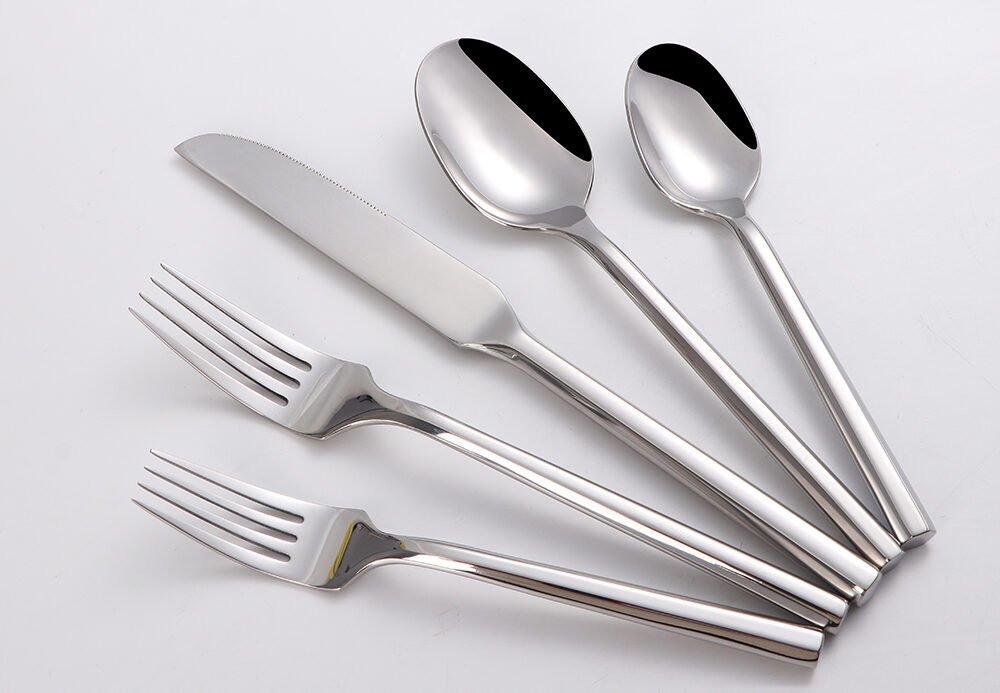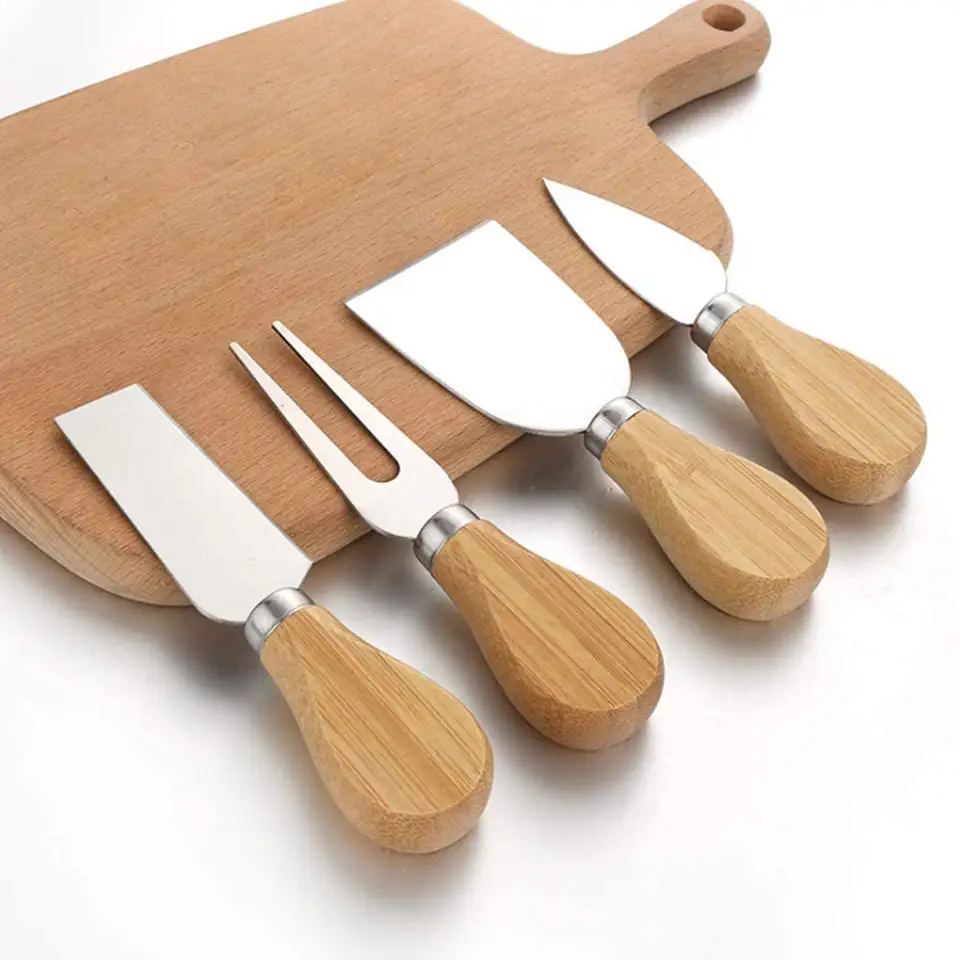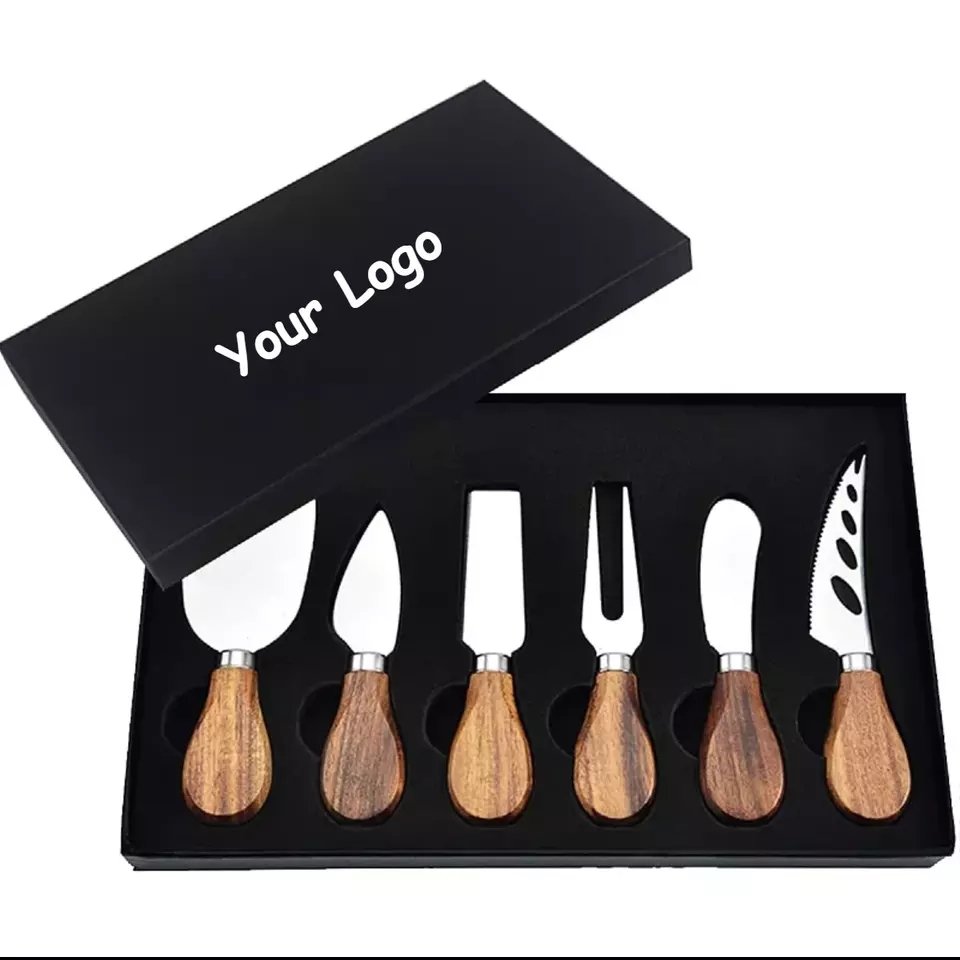Finding a reliable cutlery manufacturer can be overwhelming. Without proper guidance, choosing the wrong supplier can lead to costly mistakes.
A reliable cutlery manufacturer provides consistent quality, competitive pricing, customization options, and on-time delivery, ensuring your business runs smoothly and profitably.
Let’s explore how to identify the best cutlery set manufacturers by examining essential factors and trusted brands in detail.
Table of Contents
Who Makes Flatware in the US?
Finding quality flatware made in the US can be challenging. Many companies claim local production but outsource overseas, confusing buyers.
US-made flatware manufacturers include Liberty Tabletop, Sherrill Manufacturing, and Oneida. These brands are known for craftsmanship, premium materials, and reliable production standards.
When selecting a US-based flatware manufacturer, understanding the background and strengths of each brand helps you choose wisely. Let’s examine the top three:
Liberty Tabletop, produced by Sherrill Manufacturing, is currently the only remaining flatware manufacturer in the US. Located in Sherrill, New York, this brand has a reputation for durable stainless steel products and environmentally responsible practices. They offer a wide range of elegant designs suitable for home and hospitality use.
Sherrill Manufacturing, parent company to Liberty Tabletop, offers OEM production services, making it ideal for businesses seeking private-label products. Their flatware lines emphasize quality craftsmanship, sustainable manufacturing processes, and compliance with strict FDA standards.
Historically a major US manufacturer, Oneida has transitioned most production overseas. However, they maintain a robust reputation based on decades of American production and still offer some domestically produced lines. Careful attention is needed when choosing products labeled “Oneida USA” to verify actual production location.
| Brand Name | Key Strength | Production Location |
|---|---|---|
| Liberty Tabletop | Sustainable practices, Quality | USA |
| Sherrill Manufacturing | OEM capabilities, Reliability | USA |
| Oneida | Legacy brand, design variety | USA and International |
When looking for authentic US-made flatware, it’s essential to verify production origins to avoid confusion and disappointment.
Is Robert Welch Cutlery Worth It?
Selecting luxury cutlery brands can be intimidating. High prices make it difficult to judge whether you’re getting genuine value.
Robert Welch cutlery is renowned for its design aesthetics, durability, and meticulous craftsmanship, making it worth the investment for those seeking high-quality cutlery sets.
Robert Welch is a British luxury brand famous for its timeless designs and exceptional quality. Established in 1955, the company offers cutlery designed for both beauty and everyday practicality. Here’s what makes Robert Welch cutlery special:
Design Excellence
Robert Welch’s designs blend contemporary style with ergonomic functionality. Each piece undergoes rigorous testing to ensure comfort, balance, and ease of use, enhancing dining experiences.
Quality Materials
Their cutlery predominantly features premium-grade 18/10 stainless steel. This composition guarantees superior resistance to corrosion, staining, and bending, even after years of use.
Value for Money
Though Robert Welch cutlery can be pricey, the long-term durability and timeless elegance justify the investment. It’s ideal for both luxury home settings and upscale dining establishments seeking quality that lasts.
| Feature | Benefits | Typical Usage |
|---|---|---|
| Ergonomic Design | Comfortable grip and easy handling | Daily and special occasions |
| 18/10 Stainless Steel | Durability, rust-resistance | Long-term intensive use |
| Elegant Appearance | Adds prestige and value to table settings | Hotels, restaurants, homes |
Considering these aspects, Robert Welch cutlery remains an excellent choice for those prioritizing aesthetics, durability, and reliable quality.
What are the Most Exclusive Cutlery Brands?
Finding exclusive cutlery brands can be difficult due to the market’s saturation with low-quality options masquerading as luxury products.
The most exclusive cutlery brands include Christofle, Georg Jensen, Sambonet, Cutipol, and Robert Welch, renowned globally for exceptional quality, innovative designs, and meticulous craftsmanship.
The exclusivity of cutlery brands is often associated with unique designs, unparalleled craftsmanship, and premium materials. Let’s dive deeper into the top exclusive brands:
Founded in France in 1830, Christofle epitomizes luxury with handcrafted silverware. Their elegant cutlery collections are synonymous with prestige and sophistication, favored by royalty and elite dining establishments worldwide.
Originating in Denmark, Georg Jensen is renowned for sleek Scandinavian designs that combine functionality with artistic expression. Each set represents the pinnacle of modern luxury and practicality.
An Italian brand recognized for innovative and stylish designs, Sambonet balances artistic creativity with advanced production techniques. Their products regularly appear in prestigious hotels and restaurants globally.
| Brand | Origin | Specialty | Ideal for |
|---|---|---|---|
| Christofle | France | Handcrafted silverware | Luxury establishments |
| Georg Jensen | Denmark | Modern Scandinavian design | Design-focused customers |
| Sambonet | Italy | Innovative and creative designs | Upscale hospitality |
These exclusive brands cater to consumers and businesses who value extraordinary craftsmanship, aesthetic distinction, and lasting quality.
What is the Best Cutlery Grade?
Selecting the best cutlery grade can be challenging without proper knowledge, causing confusion and potential quality issues.
The best cutlery grade is 18/10 stainless steel, containing 18% chromium and 10% nickel. It offers superior corrosion resistance, durability, and long-lasting shine suitable for high-end use.
The grade of stainless steel in cutlery affects quality, price, and performance. Understanding different grades is essential for informed purchasing:
Stainless Steel Grades in Cutlery
| Grade | Composition | Durability | Resistance to Corrosion | Common Usage |
|---|---|---|---|---|
| 18/10 | 18% Chromium, 10% Nickel | Excellent | High | Premium cutlery, restaurants, hotels |
| 18/8 | 18% Chromium, 8% Nickel | Very Good | High | Household, mid-range restaurants |
| 18/0 | 18% Chromium, No Nickel | Moderate | Lower | Budget options, casual dining |
Choosing the appropriate stainless steel grade ensures your cutlery matches your intended usage and budget, preventing costly quality issues in the future.

What Cutlery Does Gordon Ramsay Use?
Identifying professional-quality cutlery can be complicated, especially when influenced by celebrity endorsements.
Gordon Ramsay uses brands like Royal Doulton and Wüsthof, known for exceptional quality, sharpness, durability, and professional-grade materials suitable for intense kitchen use.
Gordon Ramsay’s endorsement signals a brand’s professional quality and reliability. He specifically prefers:
Royal Doulton
Known primarily for stylish designs and practical daily use, Royal Doulton provides high-quality stainless steel sets ideal for everyday dining and hospitality needs.
Wüsthof
Wüsthof is Ramsay’s preferred knife brand. Made in Germany, these knives feature superior sharpness, long-lasting durability, and precision craftsmanship, favored by professionals worldwide.
| Brand | Origin | Key Strength | Ideal Use |
|---|---|---|---|
| Royal Doulton | UK | Stylish design, daily practicality | Everyday dining, hospitality |
| Wüsthof | Germany | Sharpness, durability | Professional culinary tasks |
Choosing Ramsay-endorsed brands provides assurance of professional performance standards and reliable quality.
What Cutlery Does Gordon Ramsay Use?
Unsure which cutlery brands deliver professional-grade performance? Choosing inferior cutlery can diminish your dining experience or brand image significantly.
Gordon Ramsay primarily uses Wüsthof knives and Royal Doulton cutlery, known for superior quality, durability, sharpness, and sophisticated designs suitable for high-end culinary applications.
Understanding why Gordon Ramsay selects specific brands can offer valuable insights into professional-level cutlery choices.
Why Does Gordon Ramsay Prefer Wüsthof Knives?
Wüsthof, a German brand with over 200 years of history, produces knives renowned for sharpness, balance, and precision. Chefs worldwide favor these knives due to their consistent performance and long-term durability. Wüsthof knives undergo rigorous quality control, ensuring blades remain sharp and corrosion-resistant under intensive use.
What Makes Royal Doulton Cutlery Stand Out?
Royal Doulton, a prestigious British brand, is known for stylish, ergonomic, and highly functional cutlery designs. Ramsay’s preference highlights the brand’s craftsmanship, elegance, and resilience to regular usage in demanding culinary environments. These qualities are essential for upscale restaurants and discerning home chefs alike.
| Brand | Origin | Key Features | Best For |
|---|---|---|---|
| Wüsthof | Germany | Durable, sharp, balanced blades | Professional kitchens |
| Royal Doulton | United Kingdom | Elegant designs, durable stainless steel | High-end dining |
Investing in Ramsay-approved brands ensures superior quality, reliable performance, and enhanced reputation for your business.
How Can You Tell if Cutlery is Good Quality?
Not knowing how to assess cutlery quality can result in disappointing purchases, lost customers, and wasted investments.
Good-quality cutlery is distinguished by balanced weight distribution, smooth edges, clearly indicated stainless steel grades, resistance to corrosion, and enduring shine even after repeated washing.
Quality assessment requires evaluating specific characteristics. Let’s explore these indicators in detail:
Material Transparency
Reliable manufacturers clearly mark the stainless steel grades such as 18/10 or 18/8. Clear markings help verify authenticity and quality, reducing the risk of inferior products masquerading as premium items.
Balance and Comfort
Good cutlery feels balanced and comfortable in hand. Weight distribution impacts handling, ease of use, and overall dining experience, crucial for hospitality establishments and home use.
Finish and Durability
Quality flatware has smoothly polished edges, flawless surfaces without rough spots, and strong resistance to rust or corrosion. Checking these traits ensures your cutlery remains presentable and functional in the long term.
| Quality Indicators | Good Quality | Poor Quality |
|---|---|---|
| Stainless Grade | Clearly marked, high-grade stainless | Vague, unspecified stainless |
| Balance & Comfort | Evenly weighted, comfortable grip | Uneven, awkward handling |
| Finish & Edges | Smooth, flawless finish | Rough edges, blemishes |
| Corrosion Resistance | High resistance, maintains shine | Prone to rust, tarnishing quickly |
Assessing these factors ensures informed choices, leading to long-term satisfaction with your cutlery investments.
Is Stainless Steel Cutlery Better than Silver Plated?
Unsure whether stainless steel or silver-plated cutlery suits your business better? Making the wrong choice can cause unnecessary expenses and dissatisfaction.
Stainless steel cutlery is more durable, practical, and easier to maintain than silver-plated cutlery, which requires regular polishing. Silver-plated cutlery offers elegance but is best suited for special occasions.
Both stainless steel and silver-plated options have advantages and disadvantages. Let’s compare these carefully:
Advantages of Stainless Steel Cutlery
Durability: Resistant to corrosion, tarnish, and bending.
Ease of Maintenance: Dishwasher safe, minimal upkeep.
Cost-effectiveness: Affordable and suitable for regular use.
Advantages of Silver-Plated Cutlery
Luxury Appeal: Elegant appearance, suitable for formal dining.
Heritage Value: Often associated with tradition and prestige.
| Criteria | Stainless Steel | Silver Plated |
|---|---|---|
| Durability | Excellent, long-lasting | Good, but wears off over time |
| Maintenance | Easy, dishwasher-safe | High, requires polishing |
| Appearance | Modern, functional | Classic, elegant |
| Cost | Affordable | Higher, premium pricing |
For practicality and frequent usage, stainless steel cutlery offers clear advantages, whereas silver-plated options remain ideal for luxury dining settings or special events.
Which is Better, 18 0 or 18 10 Stainless Flatware?
Choosing between stainless flatware grades without clear understanding can lead to dissatisfaction and higher replacement costs.
18/10 stainless flatware is superior to 18/0 due to its higher nickel content, offering better corrosion resistance, durability, lasting shine, and overall higher quality suitable for commercial and upscale use.
Key Differences for 18/0 vs. 18/10 Stainless Flatware
18/10 Stainless Steel: Contains 18% chromium and 10% nickel, providing greater durability, corrosion resistance, and maintaining shine longer. Ideal for commercial settings, restaurants, and premium households.
18/0 Stainless Steel: Contains 18% chromium, no nickel, less expensive but prone to rusting over time, better suited for casual settings or budget-conscious choices.
| Property | 18/10 Stainless | 18/0 Stainless |
|---|---|---|
| Corrosion Resistance | Excellent | Moderate, susceptible to rust |
| Durability | Very high, retains shine | Lower, dulls over time |
| Cost | Higher | Lower, budget-friendly |
| Typical Usage | Hotels, restaurants, quality households | Casual dining, cafeterias |
Choosing the correct stainless steel grade ensures your investment aligns with your intended usage and business positioning.
Which is Better, 18/8 or 304 Stainless Steel?
Unclear distinctions between 18/8 and 304 stainless steel might cause confusion and incorrect product selection.
18/8 stainless steel is essentially equivalent to 304 stainless steel. Both contain approximately 18% chromium and 8% nickel, providing excellent durability, corrosion resistance, and suitability for cutlery applications.
Is There Any Difference?
Composition: Both 18/8 and 304 steel have almost identical compositions. They differ primarily in naming conventions, with “18/8” being the consumer-grade reference and “304” as the industrial specification.
Applications: Both are widely used in cutlery, kitchenware, hospitality, and foodservice industries due to excellent hygiene, durability, and resistance to corrosion.
| Features | 18/8 Stainless Steel | 304 Stainless Steel |
|---|---|---|
| Chromium Content | ~18% | ~18% |
| Nickel Content | ~8% | ~8% |
| Corrosion Resistance | Excellent | Excellent |
| Industry Usage | Consumer products | Industrial and consumer products |
Both are interchangeable in practical terms. Ensuring correct labeling from trustworthy manufacturers remains key to product satisfaction.
Is stainless steel cutlery better than silver plated?
If you’re unsure whether stainless steel or silver-plated cutlery suits your business best, you might end up disappointing customers with unsuitable products.
Stainless steel cutlery is more durable, corrosion-resistant, and cost-effective than silver-plated options, which require regular polishing and are prone to tarnishing.
When I started manufacturing cutlery 12 years ago, I saw clients frequently unsure about choosing stainless steel or silver-plated products. One of my regular customers, Lisa from Turkey, initially preferred silver-plated cutlery due to its luxurious appearance but switched to stainless steel due to practical considerations.
Practical Advantages of Stainless Steel Over Silver-Plated
Here’s a clear comparison of these two materials:
| Feature | Stainless Steel | Silver-Plated |
|---|---|---|
| Durability | High | Moderate |
| Tarnish-Resistance | High | Low |
| Maintenance | Easy | Difficult |
| Cost | Moderate | High |
| Appearance | Versatile, Modern | Classic, Luxurious |
Silver-plated cutlery gives a luxurious impression but needs constant maintenance to avoid tarnish. Stainless steel cutlery, especially 18/10, offers practicality, longevity, and a modern look. If your customers value convenience and long-term usability, stainless steel is the better choic
Cost-Effectiveness for Businesses
Silver-plated cutlery significantly increases costs, potentially affecting profitability. Stainless steel offers a reliable, attractive, and cost-effective solution, especially suitable for restaurants, airlines, hotels, and large-scale events where durability and ease of maintenance are priorities.
Which is better, 18/0 or 18/10 stainless flatware?
Choosing incorrectly between 18/0 and 18/10 stainless flatware can result in customer dissatisfaction or unnecessary production costs.
18/10 stainless flatware is superior to 18/0 due to better corrosion resistance, higher durability, and a more luxurious finish, but it costs slightly more.
I’ve frequently advised my clients, including Lisa, about choosing stainless steel flatware. Understanding the distinction between 18/0 and 18/10 stainless steel is crucial to delivering the right products to your customers.
Key Differences Between 18/0 and 18/10
Let me clearly present the major differences in a table format:
| Composition | Chromium Content | Nickel Content | Corrosion Resistance | Price |
|---|---|---|---|---|
| 18/0 | 18% | 0% | Moderate | Affordable |
| 18/10 | 18% | 10% | High | Expensive |
18/10 stainless flatware is noticeably better in corrosion resistance and appearance because of its nickel content. Nickel adds a polished shine and resilience, perfect for higher-end dining establishments and hospitality settings. Meanwhile, 18/0 stainless steel, despite its lower corrosion resistance, is suitable for cost-sensitive projects like casual restaurants and mass-market distribution.
Consider Your Customer Segment
I advise choosing 18/10 stainless steel if your customers demand premium quality and aesthetics. But, if budget sensitivity is high among your target market, 18/0 stainless flatware offers decent quality at lower costs.
Which is better, 18/8 or 304 stainless steel?
Confusion between stainless steel grades 18/8 and 304 may lead to quality control problems and production delays.
18/8 stainless steel and 304 stainless steel are essentially identical, both containing about 18% chromium and 8% nickel, providing excellent corrosion resistance and durability.
At Brilliant, I’ve had countless discussions with procurement officers confused between these two grades. Let’s clarify the confusion definitively.
Understanding Material Equivalence
Check this clear breakdown for clarity:
| Properties | 18/8 Stainless | 304 Stainless |
|---|---|---|
| Chromium Content (%) | 18% | 18% |
| Nickel Content (%) | 8% | 8% |
| Corrosion Resistance | High | High |
| Food Grade Suitability | Yes | Yes |
| Cost | Moderate | Moderate |
18/8 and 304 stainless steels have identical composition, providing superior performance, especially in food-related environments. Both are ideal choices for hotels, airlines, and restaurant applications, fulfilling global certification standards like FDA, LFGB, and DGCCRF.
Certification and Industry Acceptance
My company, Brilliant, commonly uses 304 stainless steel in production due to its consistent industry acceptance and proven reliability. Both grades can confidently fulfill international requirements, ensuring your products meet strict market standards.
What is the best type of cutlery?
Choosing unsuitable cutlery types can limit your business growth and negatively affect customer retention.
The best cutlery type depends on the intended use, customer preferences, durability requirements, and price sensitivity; stainless steel generally emerges as the most versatile option.
Choosing cutlery types is a challenge I’ve consistently guided my clients through. Let’s examine closely the popular options available:
Popular Cutlery Types Comparison
Here’s a simple overview to help your decision:
| Type | Durability | Price Range | Popularity | Best suited for |
|---|---|---|---|---|
| Stainless Steel | High | Moderate | Very High | General, commercial use |
| Bamboo Cutlery | Moderate | Low | Increasing | Eco-conscious customers |
| Wooden Handle Cutlery | Moderate | Moderate | Moderate | Niche, premium households |
| Plastic Handle Cutlery | Low | Low | Moderate | Casual, disposable markets |
Stainless steel is undeniably the most common choice globally, given its durability, ease of maintenance, and aesthetic versatility.
Matching Cutlery Type to Market Demand
When working with Lisa, I recognized her customers preferred innovative yet durable cutlery. She quickly realized stainless steel matched this preference best, improving her customer satisfaction significantly.
How do you choose high quality cutlery?
Selecting poor-quality cutlery can cause customer complaints, lost sales, and harm your brand reputation.
High-quality cutlery is selected based on durability, corrosion resistance, ergonomic design, finishing quality, and reliable manufacturing processes and certifications.
Let’s clearly outline what defines quality cutlery:
Checklist for Quality Evaluation
Material: Stainless steel (18/10 or 304) recommended.
Certifications: FDA, LFGB, DGCCRF.
Design Ergonomics: Comfortable handling.
Finish: Smooth edges, polished surfaces.
Manufacturing Capabilities: Reliable and consistent production capacity.
Clients like Lisa heavily emphasize certifications and consistent production capacity, reducing potential quality problems.

What is the most used cutlery in the world?
Not knowing global cutlery trends might cause your products to miss market demands, resulting in unsold stock.
Stainless steel cutlery is the most widely used globally, preferred for its durability, affordability, ease of maintenance, and versatile aesthetic appeal across various dining settings.
As someone who’s been manufacturing cutlery sets for over a decade, I’ve closely watched global trends evolve. My customers, including Lisa from Turkey, often ask which cutlery type is most popular worldwide. The clear winner is stainless steel. Let’s explore why:
Why Stainless Steel Dominates Globally?
Stainless steel has consistently remained popular due to its universal appeal. Below is a simple comparison table highlighting why it dominates:
| Feature | Stainless Steel | Bamboo/Wood | Plastic | Silver-plated |
|---|---|---|---|---|
| Durability | High | Medium | Low | Moderate |
| Corrosion Resistance | High | Low | Moderate | Low |
| Ease of Maintenance | Easy | Moderate | Easy | Difficult |
| Cost | Moderate | Low | Very Low | High |
| Global Popularity | Very High | Growing | Moderate | Declining |
Stainless steel is ideal for hotels, restaurants, airlines, and household use because it’s durable, easy to clean, affordable, and resistant to corrosion. Silver-plated cutlery, despite its luxury appeal, has decreased in popularity because it’s expensive and difficult to maintain.
Market Preferences and Trends
My customer Lisa initially considered silver-plated cutlery but found stainless steel met customer preferences more closely, particularly in busy markets that value longevity, ease of cleaning, and affordability. Stainless steel products meet international quality standards like FDA, LFGB, and DGCCRF certifications, adding another layer of confidence for buyers.
What is the difference between flatware and cutlery set?
Misunderstanding the terms ‘flatware’ and ‘cutlery set’ might confuse customers, causing incorrect product listings and lost sales.
Flatware generally refers specifically to eating utensils like forks, knives, and spoons, while a cutlery set can also include additional items like serving utensils, specialty knives, or accessories.
In my interactions with customers worldwide, I’ve noticed confusion about the terms ‘flatware’ and ‘cutlery set.’ Clearing this confusion helps ensure that you and your customers understand precisely what you’re offering or purchasing.
Clarifying Definitions: Flatware vs. Cutlery Set
Here’s a simplified breakdown to clarify differences:
| Feature | Flatware | Cutlery Set |
|---|---|---|
| Typical Items | Forks, knives, spoons | Forks, knives, spoons, serving utensils, accessories |
| Usage Context | Personal dining | Dining, cooking, serving |
| Common Materials | Stainless steel, silver-plated | Stainless steel, bamboo, plastic, wood, silver-plated |
| Scope | Narrow | Broad |
Flatware typically includes utensils specifically used for eating. In contrast, a cutlery set might include serving spoons, ladles, cake servers, salad tongs, cheese knives, or even steak knives. Knowing these distinctions helps ensure you select or offer the correct products according to your target market.
Practical Implications for Business Decisions
For instance, Lisa, my Turkish client, initially struggled to identify which products best suited her customers. Clarifying these terms helped her precisely target different customer segments. Restaurants usually require comprehensive cutlery sets, while airlines typically focus exclusively on flatware for individual dining.
Selecting a reliable cutlery set manufacturer requires clear understanding of global trends, accurate terminology, quality standards, certifications, and matching products specifically to your market needs.





